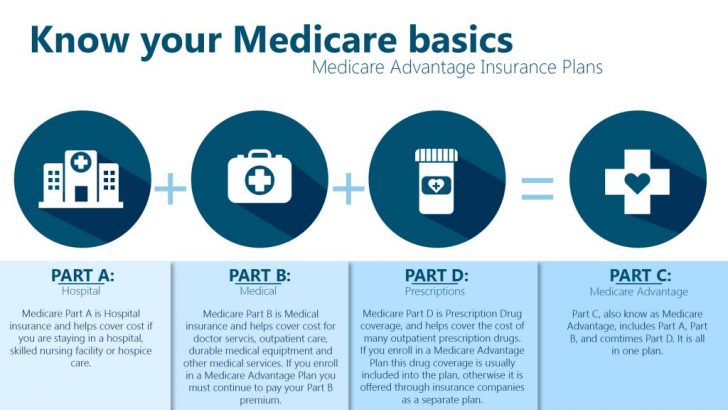
Senior Citizens Worried About Medicare Part D, But Here’s Why It Could Be a Good Thing

Are you on Medicare? Then you must already be familiar with its four parts, named alphabetically as Parts A, B, C, and D. While understanding all segments of the national insurance program is important, let’s first focus our concentration on Part D.

Understanding all parts of the insurance program is important
This optional Medicare segment was first made available in 2006, and it mostly covers self-administered prescription drugs. But you already knew this, didn’t you? What you may not have known hitherto is that with the introduction of Part D followed a reduction in the cost of drugs.
60 Million Beneficiaries
The Kaiser Family Foundation is ever conducting surveys on the Medicare program, and it is safe to say that the non-profit is quite knowledgeable on matters concerning the insurance program. According to them, 60 million Americans are on Medicare, and a majority of them have opted for the Part D cover.
To be exact, Kaiser reports this number of Medicare Part D beneficiaries to be 43 million. Doing the math, isn’t that a percentage of around 72%? As you can see, that’s way more than half, so the claim that a majority of beneficiaries are on Part D is as true as it can be.

Majority of retirees are on Medicare Part D. No wonder they are this healthy
The introduction of this segment was definitely going to affect drug prices, and that it has been around for over a decade called for an analysis of this. The Center for Retirement Research (CRR) at Boston College carried out a study to figure out exactly how Medicare Part D has influenced the availability and price of prescription drugs under coverage, and the results were encouraging.
Speaking about the findings, Gal Wettstein, a CRR research economist, revealed that the introduction of the final Medicare part did indeed lead to a decrease in the cost of prescription drugs.
However, a decrease in price led to an increase in both demand and consumption, totally in sync with the general demand curve. You’d think it would be different for drugs, right? Turns out the dynamics of demand and supply apply everywhere.
All the same, you could argue that there’s an increase in consumption simply because more people can now afford the drugs. Before they were under the insurance program, patients could have been seeking alternatives or choosing to do without the drugs altogether. Doesn’t this make sense?
Dominance by Major Brands
And just so you know, a decrease in price isn’t the only way that Medicare Part D has affected the pharmaceuticals industry. According to the CRR study, its introduction has led to the dominance of major brands.

GSK, the manufacturers of Paxil, is one of the dominant pharmaceutical companies
Thanks to patents granted by the FDA, these companies can protect their drugs from generic manufacturers for as long as they need to. On average, these patents last twenty years, with the option of renewal for another two decades.
So, what does this mean for generic drug manufacturers? As the CRR found out, these companies are facing stiffer competition from each other. Luckily, consumers are usually the luckiest in a competitive market, as it translates to high-quality products and fair prices.
And isn’t this exactly what the study told us? The country’s senior citizens have, therefore, no cause for alarm where their health is concerned. They are receiving high-quality drugs, and yet they’re not paying an arm and a leg for them.
More in Medical Conditions
-
Is It Safe to Travel to Paris? Essential Tips for Tourists
When considering a trip to Paris, one of the first questions that often arises is, “Is it safe to travel to...
June 20, 2024 -
Hematoma vs Bruise: What Is the Difference?
When it comes to injuries, hematoma vs bruise are often used interchangeably, but they refer to different medical conditions. Understanding the...
June 12, 2024 -
What Is Unipolar Depression? Here’s What You Need to Know Right Now
Depression casts a long shadow over many lives, with symptoms that affect everything from our energy levels to our ability to...
June 7, 2024 -
A Comprehensive Guide on How to Heal Anxious Attachment Style
If you often find yourself seeking constant reassurance from your partner or requiring endless validation to feel secure, you may be...
June 1, 2024 -
Why Is My Skin Peeling on My Face After Skincare? Here’s What You Need to Know
Experiencing skin peeling on your face after implementing a skincare routine can be perplexing and frustrating. This phenomenon, where the skin...
May 23, 2024 -
What Is a Mental Edge, and How Do You Get It?
Have you ever wondered why some individuals seem unshakably confident under intense pressure, finding a way to excel when it matters...
May 15, 2024 -
When to Worry About Varicose Veins? Here’s What You Need to Know
Varicose veins are a common issue, affecting about 20% of adults. They’re usually seen as unsightly blemishes on the legs but...
May 12, 2024 -
Why Is Discipline Important: The Ultimate Guide to the Importance of Discipline
Discipline is undoubtedly one of life’s most crucial character traits. It shapes how we approach tasks, manage our time, and...
May 3, 2024 -
Have I Fallen Out of Love or Am I Depressed? Everything You Need to Know
Have I fallen out of love or am I depressed? You’re not alone in this query. In the diversity of human...
April 26, 2024















You must be logged in to post a comment Login